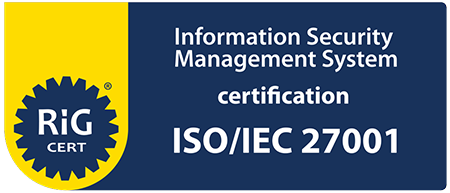If you are reading this, you probably already know how important it is to build a feedback culture in a company. The feedback and the willingness of employees to provide it on a regular basis would allow you to identify at the earliest stage potential crises, problematic areas, and risks in the organization. In addition, you will give your employees the chance to receive systematic information about perceptions and expectations towards them, support them in their individual development and avoid the unpleasant situation where the work of individual employees remains unnoticed.
In order to conduct a successful 360-degree survey, you need to consider a few key factors that would affect its effectiveness.
We decided to start at the beginning - the preparation of the questionnaire with your consultant, where things could go wrong in a way that could lead the whole survey to a complete failure.
To begin with, make sure your employees will not answer questions about things you can't change because doing so will only make them feel dissatisfied and disrespected. An example of such a question is "Are you satisfied with your pay?". Likewise, be sure that no one will answer, "You pay me too much". Usually, you'll get feedback gravitating around the options "Could be a bit more" and "Definitely need a raise". However, there is hardly any company that will be able to immediately raise all of its employees' salaries, so be very careful what you ask.
It is good to keep the questionnaire as short as possible, but not at any cost. Do not combine questions for the sole purpose of reducing their number. This will only confuse the employees who will do the questionnaire leading to inaccurate results that do not reflect the actual situation in the company. Remember, never ask two questions combined into one, such as "My manager gives me frequent and constructive feedback". How could a person evaluate this statement if their manager gives them constructive feedback but only once a year, or what about if they receive it every week but in a very superficial and ineffective way?
The rating scales should always have an even number of choices – 2, 4, 6, 8, or 10 boxes. At first glance, this aspect may not seem that important, but if you use the wrong scale in a 360-degree survey, it could deprive you of getting realistic feedback from your employees. Why? Because people are too polite and strive to avoid conflicts. So if you offer a scale with 3, 5, 7, or 9 response options, many of your employees would select the middle of the scale showing they have a neutral attitude to the question asked. In turn, you will get those "neutral" results, and you need to present them to the management. The likelihood that no real change will follow is too great because, on the one hand, these "neutral" results leave much space for interpretation, and, on the other, they do not trigger action to change something. Therefore, always choose scales with an even number of possible responses, which will provide you with much better information about whether the employee's attitude on a given issue leans in a positive or negative direction.
It is very tempting to purchase ready-made and tested 360-degree questionnaire from a vendor with a good reputation. The logic is clear - if it's been used by so many employees and organizations so far, then it works. But does one size really fit all? Generalization is too dangerous, and you should always keep it away from your feedback system if you want to conduct a truly qualitative 360-degree survey. You need to be as specific as possible in your questions incorporating the already established definitions and concepts regarding values, corporate culture, leadership principles, etc., in your organization. Remember, a good 360-degree feedback system should always be easily adaptable to the specifics of your company.
Only numbers and no qualitative analysis or comments. This is a problem that many organizations face when deciding to undertake a 360-degree survey because their employees often feel hampered to understand where their problem areas are and what can be done to improve the situation from the sketched rating numbers in their report. Therefore, always give your employees a chance to leave comments and explain why they gave that rating to their colleague. What you need in addition to quantitative data is some qualitative data as well with supplementary questions like:
• What should you continue doing?
• What should you start doing
• What should you stop doing
The more feedback comments you get, the better.
If you want to learn more about how to improve the feedback system in your organization and avoid the most common mistakes, you can download the Black Book: Feedback Systems by the German author Guido Betz part of the LS-S Leadership Support's team. He has over 40 years of experience in consulting businesses in organizational development, HR management, leadership development, change management. In addition, Guido Betz has been a speaker at the world's largest HRD and OD forums, including ATD 2021 in the USA.
Get your free copy in English or German on the following link.




